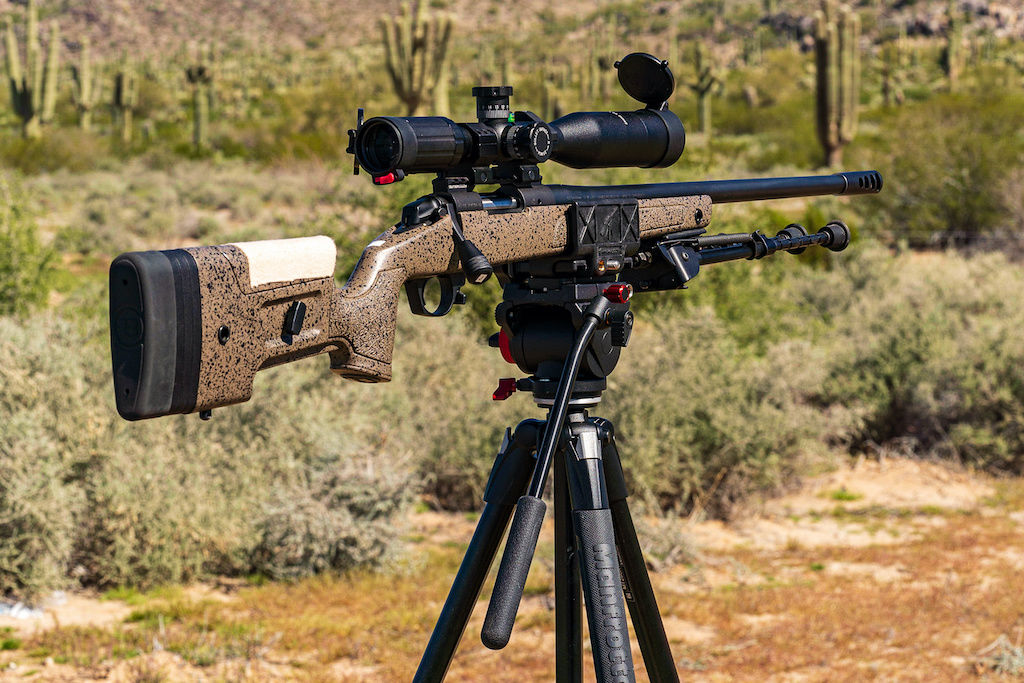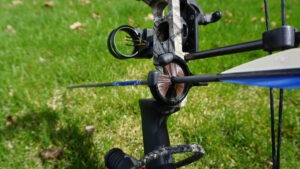Trap shooting is a popular form of clay pigeon shooting that requires skill, precision, and the right equipment. One crucial component of a successful trap shooting setup is the shotgun powder. The type of powder you choose can greatly impact both your shooting performance and the overall experience.
Understanding the Basics of Shotgun Powder
Before delving into the best shotgun powders for trap shooting, it’s important to understand the basics. Shotgun powder, also known as gunpowder or propellant, is the explosive substance that propels the shot out of the barrel. It consists of three main components: nitrocellulose, nitroglycerin, and stabilizers. The combination of these ingredients determines the burn rate and performance of the powder.
Nitrocellulose, also known as cellulose nitrate, is a highly flammable compound that provides the majority of the energy in shotgun powder. It is made by treating cellulose, a natural polymer found in plants, with a mixture of nitric acid and sulfuric acid. This process results in a highly combustible material that burns rapidly when ignited.
Nitroglycerin, on the other hand, is a highly sensitive and explosive liquid that acts as a catalyst for the combustion of nitrocellulose. It is added in small quantities to enhance the burn rate and energy output of the powder. However, due to its volatility, nitroglycerin needs to be stabilized to prevent accidental detonation.
Stabilizers are chemicals added to shotgun powder to increase its shelf life and prevent degradation. They help maintain the stability of the nitrocellulose and nitroglycerin, ensuring consistent performance over time. Common stabilizers include diphenylamine, ethyl centralite, and ethylhexyl nitrate.
The Role of Shotgun Powder in Trap Shooting
In trap shooting, shotgun powder plays a crucial role in achieving consistent and accurate shot patterns. The right powder ensures optimal velocity, pressure, and shot dispersal, allowing shooters to break clays with ease. It also affects other vital factors such as recoil, muzzle velocity, and overall reliability of the shotgun.
Velocity is an important factor in trap shooting as it determines how quickly the shot reaches the target. The right powder can provide the necessary velocity to hit fast-moving clay targets consistently. Pressure, on the other hand, affects the tightness of the shot pattern. The right balance of pressure ensures that the shot spreads evenly, increasing the chances of hitting the target.
Recoil, or the backward movement of the shotgun after firing, is another important consideration in trap shooting. The right powder can help reduce recoil, allowing shooters to maintain better control and accuracy. Muzzle velocity, which is the speed of the shot as it leaves the barrel, is also influenced by the choice of shotgun powder. Higher muzzle velocity can help compensate for longer distances and wind conditions.
Different Types of Shotgun Powder
There are two primary types of shotgun powders used in trap shooting: smokeless and black powder. Smokeless powder is the most commonly used in modern shotguns. It produces less residue and fouling, resulting in cleaner barrels and easier maintenance. Smokeless powder is also more stable and less sensitive to temperature and humidity changes, making it more reliable in various shooting conditions.
Black powder, on the other hand, is the traditional form of shotgun powder. It is composed of sulfur, charcoal, and potassium nitrate. Black powder has a lower energy output compared to smokeless powder but can still be effective for some shooters. It produces a characteristic puff of smoke when fired, adding a touch of nostalgia to the shooting experience.
While smokeless powder is the preferred choice for most trap shooters due to its cleaner burn and improved performance, some shooters still enjoy the traditional feel and aesthetics of black powder. The choice between the two ultimately depends on personal preference, shooting style, and the specific requirements of the shooter.
Factors to Consider When Choosing Shotgun Powder for Trap Shooting
Choosing the best shotgun powder for trap shooting is a crucial decision that should be based on several factors. Consider the following aspects before making your selection:
The Importance of Powder Burn Rate
The burn rate refers to the speed at which the powder ignites and generates gas to propel the shot. Different shotguns and shooting styles require specific burn rates. For trap shooting, you generally want a powder with a medium to fast burn rate. This ensures a consistent pressure build-up and optimal shot velocity for breaking clays accurately.
When it comes to trap shooting, consistency is key. A powder with a consistent burn rate ensures that each shot behaves predictably, allowing you to develop muscle memory and improve your shooting skills. The medium to fast burn rate of the powder ensures that the shot leaves the barrel at a consistent speed, minimizing any variations in shot placement caused by inconsistent powder ignition.
Furthermore, a powder with a medium to fast burn rate also helps in reducing recoil. The rapid pressure build-up generated by the powder allows for a smoother and more controlled recoil, making it easier for you to maintain your shooting stance and follow through with your shot.
Considering the Shot Size and Weight
Shot size and weight are important factors to consider when selecting shotgun powder. Lighter shot loads require faster-burning powders to achieve appropriate velocities, while heavier loads typically work better with slower-burning powders. It’s essential to match the powder with the specific shot size and weight you intend to use for trap shooting.
Shot size plays a significant role in determining the pattern density and effective range of your shots. Smaller shot sizes, such as #8 or #9, are commonly used in trap shooting as they provide a dense pattern that is effective at breaking clays. On the other hand, larger shot sizes like #7 or #7.5 are often preferred for longer-range shots where a denser pattern is necessary to ensure a clean break.
When it comes to shot weight, it’s important to find the right balance between velocity and recoil. Lighter shot loads are generally favored for trap shooting as they offer higher velocities, allowing for better target acquisition and faster follow-up shots. However, lighter loads can also result in increased recoil, which may affect your shooting performance. By selecting the appropriate shotgun powder, you can find the right balance between shot weight and recoil, ensuring optimal performance on the trap field.
The Impact of Weather Conditions on Powder Performance
Weather conditions can significantly affect the performance of shotgun powder. Temperature, humidity, and altitude can alter the burn rate, velocity, and consistency of the powder. It’s crucial to choose a powder that performs well in a variety of weather conditions to maintain consistent shot patterns throughout your trap shooting sessions.
Extreme temperatures, whether hot or cold, can impact the burn rate of shotgun powder. In colder temperatures, the powder may burn slower, resulting in reduced shot velocities. On the other hand, hotter temperatures can cause the powder to burn faster, potentially leading to increased recoil and shot deformation. By selecting a powder that is known for its stability in a wide range of temperatures, you can ensure consistent performance regardless of the weather.
Humidity also plays a role in powder performance. High humidity can cause the powder to absorb moisture, leading to inconsistent burn rates and reduced velocities. It’s important to choose a powder that is resistant to moisture absorption, ensuring reliable performance even in humid conditions.
Altitude is another factor to consider, especially if you frequently shoot at different elevations. As altitude increases, the air density decreases, affecting the burn rate and velocity of the powder. By selecting a powder that is specifically designed for use at higher altitudes, you can maintain consistent shot performance regardless of the elevation.
In conclusion, when choosing shotgun powder for trap shooting, it’s important to consider factors such as burn rate, shot size and weight, as well as the impact of weather conditions. By selecting a powder that aligns with your specific shooting needs and performs consistently in various situations, you can enhance your trap shooting experience and improve your overall performance on the field.
Top-Rated Shotgun Powders for Trap Shooting
Now that you have a solid understanding of shotgun powder and the factors to consider, let’s explore some of the top-rated options available for trap shooting:
Reviewing the Most Popular Brands
1. Brand A – Known for its consistent burn rate and clean-burning properties, Brand A offers a wide range of powders suitable for trap shooting. Their powders provide excellent shot patterns and reliable performance in various weather conditions.
2. Brand B – With a focus on velocity and shot consistency, Brand B’s powders are favored by many competitive trap shooters. Their powders are known for their high-energy output and minimal residue, ensuring optimal shot performance.
High-Performance Powders for Competitive Shooting
1. Powder X – Designed specifically for competitive trap shooting, Powder X offers powders with exceptional burn rates and precise shot control. These powders provide tight patterns and consistent performance, making them a top choice among serious trap shooters.
2. Powder Y – Featuring a unique formulation for superior recoil reduction and muzzle velocity, Powder Y is highly regarded among experienced trap shooters. Its consistent performance and reliability give shooters the confidence to break clays at any level of competition.
Safety Precautions When Using Shotgun Powder
While selecting the right shotgun powder is crucial, safety should always be the top priority. Here are some essential safety precautions to follow when handling and using shotgun powder:
Proper Storage and Handling of Shotgun Powder
Store your shotgun powder in a cool, dry place away from open flames or sources of heat. Always follow the manufacturer’s guidelines for storage and handling to prevent accidents or degradation of the powder’s performance.
Safety Measures During the Loading Process
When loading your shotgun, ensure you have a clean and well-maintained workspace. Double-check that you’re using the correct powder and load for your intended shooting application. Following proper loading procedures and using reliable reloading equipment will help minimize the risk of accidents.
Frequently Asked Questions About Shotgun Powder
As a hunter or shooter, you may have some burning questions about shotgun powder for trap shooting. Here, we address some common misconceptions and provide expert advice:
Addressing Common Misconceptions
1. Is it true that faster-burning powders always produce tighter shot patterns in trap shooting? Not necessarily. While faster-burning powders can provide more consistent pressures, shot pattern tightness is influenced by multiple factors, including choke, shot size, and shooting technique.
2. Can I mix different powders for my shot load? It is generally not recommended to mix different powders unless explicitly stated by the manufacturer. Mixing powders can lead to unpredictable performance and potentially dangerous conditions.
Expert Advice on Shotgun Powder Selection
When in doubt about selecting the best shotgun powder for your trap shooting needs, consult with experienced trap shooters or firearms instructors. They can provide valuable insights and recommend suitable powders based on their expertise and personal experiences.
In conclusion, discovering the best shotgun powder for trap shooting involves considering various factors such as burn rate, shot size and weight, and performance in different weather conditions. By selecting the right powder, following safety precautions, and seeking expert advice when needed, you’ll be well-equipped for a successful and enjoyable trap shooting experience.


